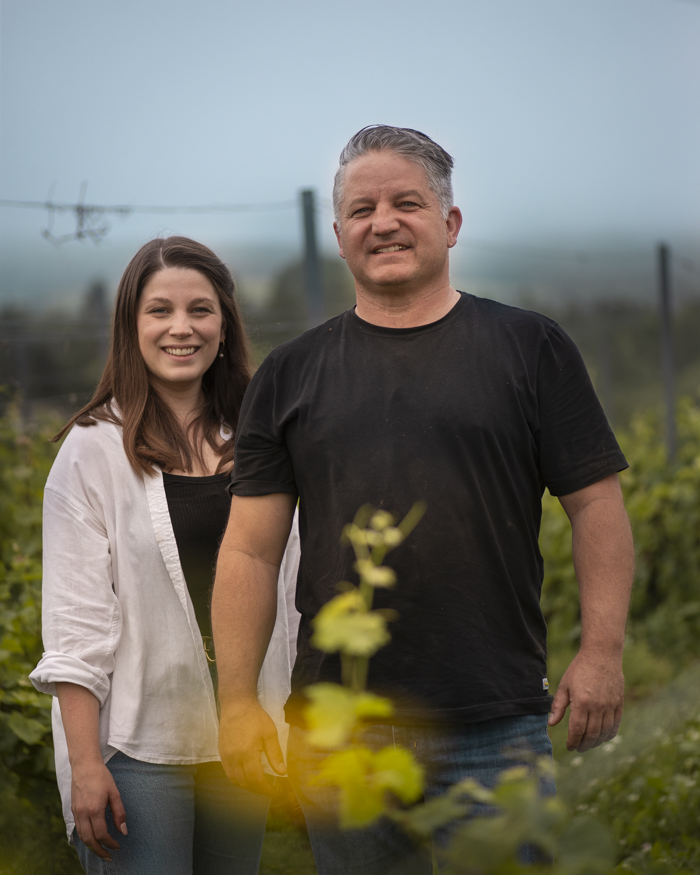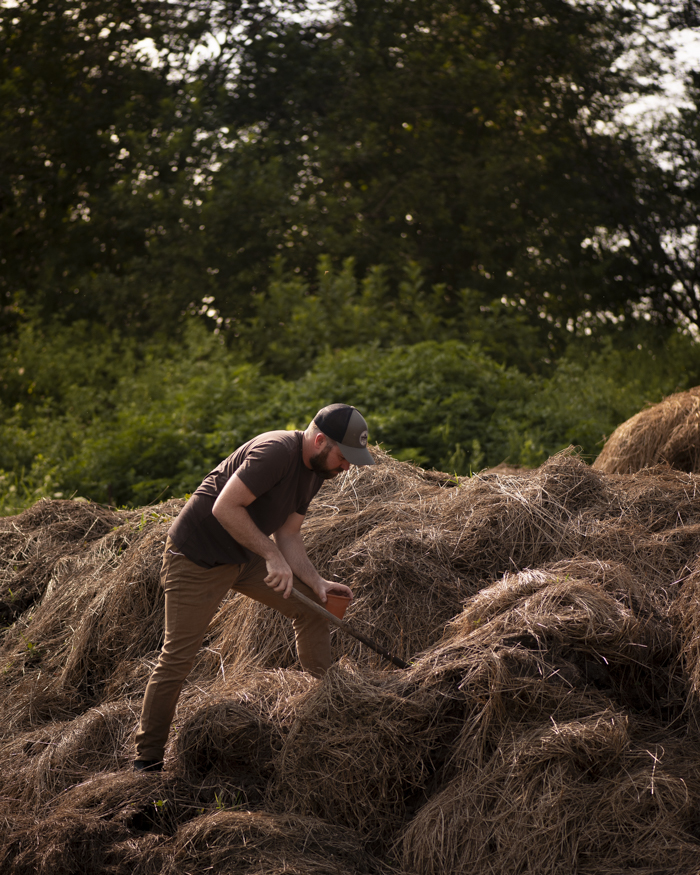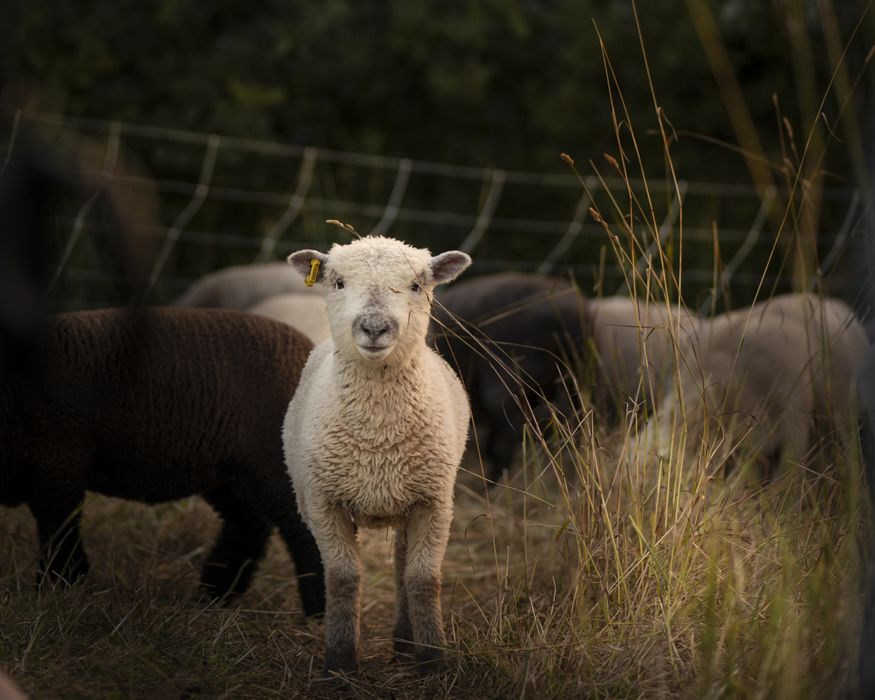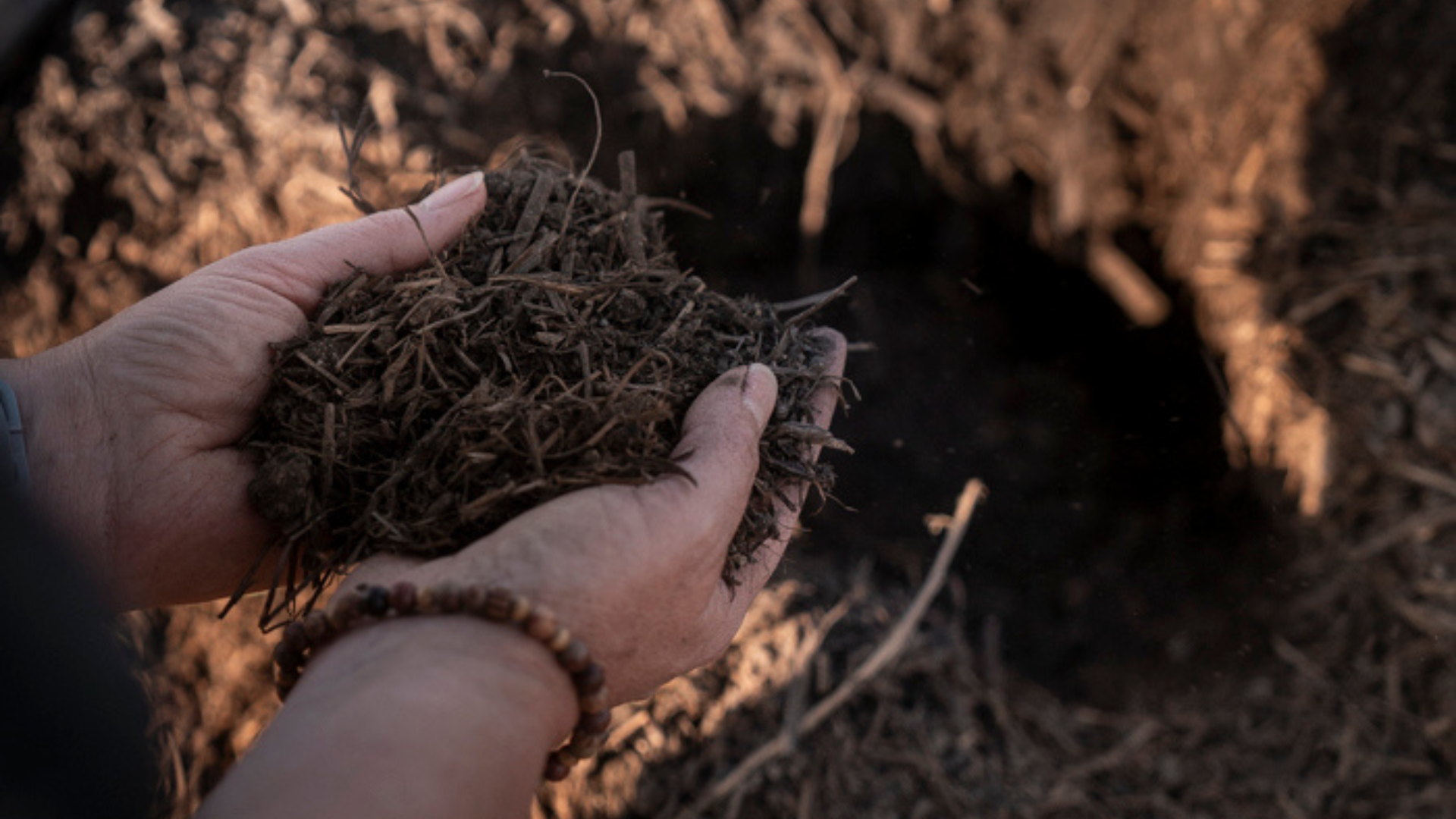Making sure whatever we take is given back. Providing plants with macro and micronutrients using organic inputs restores the soil’s biological nutrient cycling abilities. Green manures, compost and animal manure are all great examples of organic materials that enhance the biological functions of soils. Also, natural materials should be used instead of synthetics whenever possible.

Regeneration Canada has introduced the principle of reciprocity as a guiding concept in regenerative agriculture, emphasizing the intrinsic interconnectedness of nature and humans. Reciprocity places humans back into the landscape, not separate from it. Just as the land nurtures and sustains us, we must also care for the land: a reciprocal relationship.
In 2023, the Regeneration Canada team visited Lightfoot & Wolfville Vineyards as part of the Stories of Regeneration farm tour. There, Rachel Lightfoot, fourth-generation land steward and co-manager of the farm, shared her deep passion and reverence for the land they cultivate.
Situated in Nova Scotia’s picturesque Annapolis Valley, Lightfoot & Wolfville’s 40 acres of vineyards overlook the Bay of Fundy. The region is an agricultural hub, most known for growing apples. The Lightfoots and their team exemplify reciprocity through the organic, biodynamic and regenerative practices they employ, as well as their strong commitment to their community.
Reciprocity in our Landscapes
Reciprocity underscores our responsibility to preserve and steward our landscapes. At Lightfoot & Wolfville Vineyards, this commitment is evident in their passionate responsibility to leave the land in better condition for future generations. The family’s mindset is succinctly captured in the belief that whatever is taken should be given back—a principle vital to truly regenerative agroecosystems.
Reciprocity as an Indigenous Teaching
Reciprocity, and regenerative agriculture as a whole, are concepts deeply embedded in Indigenous teachings. These teachings, passed down through generations, emphasize the importance of living in harmony with the land. Regeneration Canada believes it is essential to recognize and draw inspiration from the rich Indigenous roots of reciprocity in regenerative agriculture.
Despite representing a small fraction of the global population, Indigenous peoples play a crucial and dominant role in the preservation and conservation of our natural world. This demographic holds a unique and valuable perspective on land and resource management.
In his book Research is Ceremony, Cree scholar Shawn Wilson explains the 3 R’s of Indigenous methodologies as respect, recognition and reciprocity. These teachings comprise global Indigenous methodology and are not constrained to a singular group of Indigenous peoples. Together, these 3 R’s encourage us to safeguard cultural heritage, champion social justice, and live in harmony with the natural world.
Rather than framing reciprocity as a linear transaction, Robin Wall Kimmerer, renowned environmental and forest biology professor and botanist of Potawatomi heritage, introduces in her book, Braiding Sweetgrass, the notion of an ongoing, circular exchange. She invites readers to envision this exchange where each act of giving and receiving is an ongoing, dynamic dialogue, much like the rhythmic cycles found in nature.
Using the Three Sisters planting as an example, Kimmerer illustrates reciprocity in action. Each of the Three Sisters—corn, beans, and squash—contributes and receives, sharing resources above and below ground. The corn stands tall, providing support for the beans to climb. The beans, members of the legume family, transform atmospheric nitrogen into a plant-available form through a reciprocal partnership with Rhizobium bacteria, benefitting not only the beans but also the corn and squash. The squash grows close to the ground, suppressing weeds and preserving soil moisture. This intricate web of reciprocity extends beyond the plants to the soil, creating layers of mutual benefit.
Kimmerer also proposes a fourth sister: the gardener or farmer. In Braiding Sweetgrass, she explains that the fourth sister prepares the soil and pushes seeds into the ground. This illustration highlights how integral humans are in this relationship. We have the privilege and responsibility to care for our lands well. Gardening, farming and ranching are the epitome of a reciprocal relationship.
Reciprocal Practices in Regenerative Agriculture

Reciprocity in regenerative agriculture centers on nurturing the entire agroecosystem rather than exploiting resources solely for profit. It’s a philosophy of returning more than we take from the land.
Soil health and nutrient reciprocity:
Regenerative agriculture encourages practices like using green manures, compost, and animal manure. These practices align with the principle of reciprocity by acknowledging that nutrients taken from the soil during harvest must be replenished. Specifically, when a crop is harvested from a field, the nutrients and organic matter that are taken away in the form of a crop should be given back to the land in some way. This ensures a balanced nutrient cycle and the continuous building of soil, supporting long-term agroecosystem health.
As a certified biodynamic farm, the Lightfoots also use biodynamic preparations to aid in fertilization, which include materials like grape pomace and livestock manure that feed the compost, along with cow horns to draw energy towards the process.
Nutrient circularity:
Regenerative systems aim to minimize external synthetic inputs, and optimize nutrient circularity. Nutrient cycling involves the transformation and repurposing of nutrients within an ecosystem. For instance, plant residues become nourishment for worms and soil microorganisms, whose byproducts subsequently become plant-available nutrients. While complete self-sufficiency in nutrient circularity is challenging, the continuous refinement and adaptation of regenerative practices move farming systems closer to this goal.
Regenerative agriculture embraces crop diversity, interplanting, and integrating livestock into farming landscapes. This multifaceted approach creates vibrant and resilient ecosystems that naturally attract beneficial insects and improve soil health.
Rachel Lightfoot shares that, admittedly, growing wine grapes is inherently monoculturalistic. However, to promote biodiversity both above and below ground and disrupt the vineyard’s monoculture, the Lightfoot & Wolfville team incorporates regenerative practices like cover cropping, green manure, integration of livestock (pigs, sheep, cattle), and the use of compost and compost tea produced on-farm instead of synthetic fertilizers. During certain times of the year, sheep graze between the rows of vines to manage weeds and deposit precious nutrients.
Together, these practices encourage biodiversity by providing and preserving habitats for many species that may otherwise be excluded in a monoculture system. There are plenty of hawks, eagles, pollinators, and more around the farm, which Rachel sees as a positive outcome of their biodiverse farming practices.

Cultural and Social Reciprocity:

In the broader framework of regenerative agriculture, there is a growing acknowledgment of the importance of cultural and social reciprocity. This involves engaging with local communities, supporting fair labour practices, and fostering a sense of responsibility toward the well-being of the community. Reciprocity extends beyond the land to encompass the social fabric of the farming community and its relationships with consumers.
In terms of social reciprocity, the Lightfoots prioritize giving back to their community. The family celebrates what makes the region so special: the landscape and its people. They prioritize their team’s professional development and establish close bonds with team members and their families. They offer temporary summer jobs for students to keep young people in the region, and welcome extra hands from neighbours and travelers to help during harvest. Recently, the family welcomed a public walking trail to go through the midst of their farm. The trail allows the community to enjoy the scenery and get an up-close look at how the vineyard operates. It also opens the door for valuable connections to be made between community members, farmers, and the land.
The idea of terroir and connecting people and place is a primary focus of the Lightfoot & Wolfville story, shown through the wine they produce and even through their name: Lightfoot being the family surname and Wolfville being the town where the vineyard is located. Rachel and her family prioritize the understanding of human interaction and integration with the land in all their farming activities.
Reciprocity, an ancient principle deeply rooted in our connection with the land, is not just a concept but a call to action. At Lightfoot & Wolfville Vineyards, the commitment to reciprocity is a living testament, a passionate responsibility to leave the land in better condition for future generations. From soil health and nutrient reciprocity to promoting biodiversity and cultural connections, these practices underscore our responsibility to give back more than we take. Reciprocity, an ongoing dialogue with nature, urges us to reflect on our role in this intricate web. As we conclude this exploration, let us heed the call to embrace reciprocity in our lives, supporting regenerative practices, connecting with local farms, or simply observing nature mindfully.
To know more about regenerative practices at Lightfoot & Wolfville Vineyards, watch the short film interview with Rachel and Michael Lightfoot. Moreover, listen to the podcast episode and watch the recording of our webinar “Regenerating the Market” with Rachel.
Join the regenerative agriculture movement! Stay updated with our Principles of Regenerative Land Management blog series by subscribing to our newsletter and following our social media channels. We are delighted to have you on this journey with us!
If you have any questions or comments about the topics covered in this blog post, please contact our Education & Research Manager at: paige@regenerationcanada.org. If you have questions specific to the Stories of Regeneration campaign, please connect with our Campaign Manager at: alieska@regenerationcanada.org.




